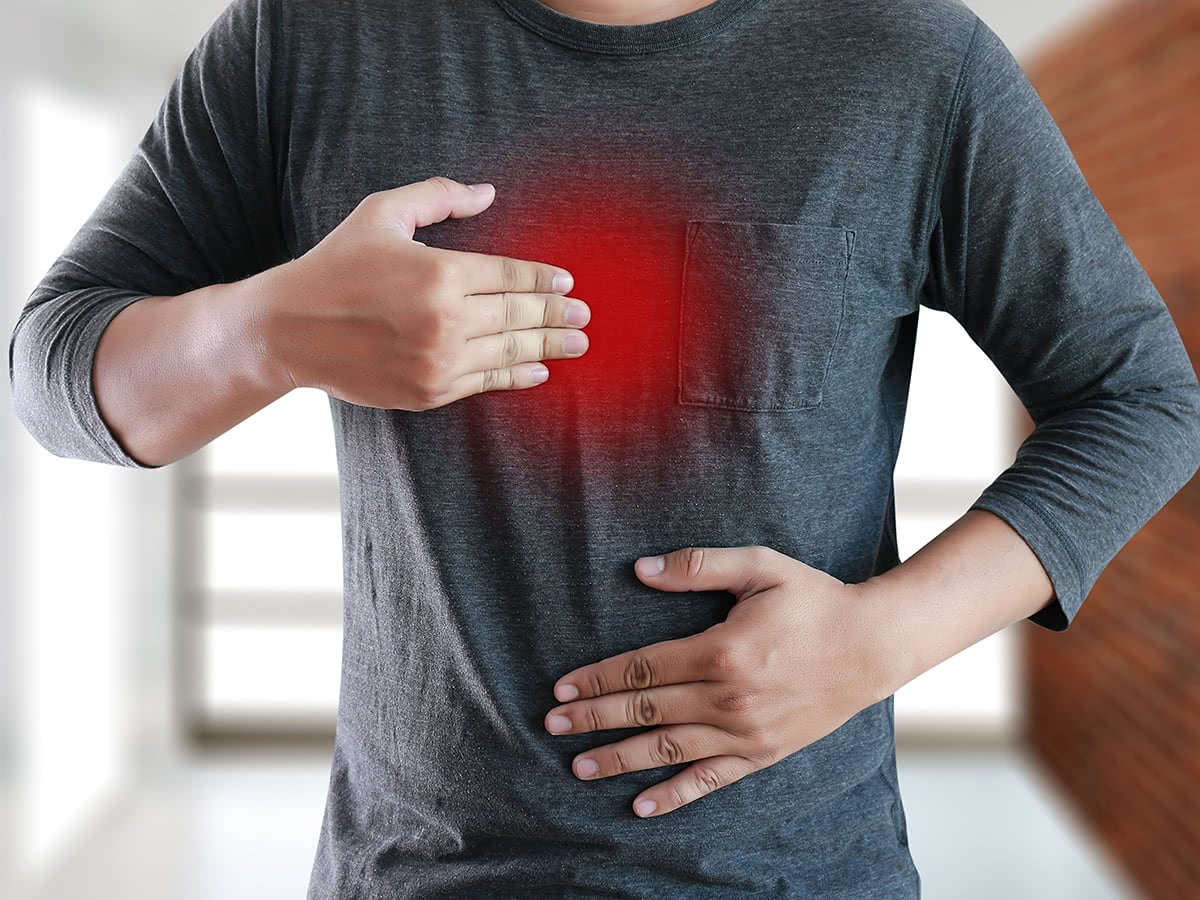Introduction
Gastro-oesophageal Reflux Disease (GORD) occurs when stomach acid frequently flows back into the tube connecting your mouth and stomach (oesophagus). This backwash (acid reflux) can irritate the lining of your oesophagus.
Many people experience acid reflux from time to time. GORD can be mild acid reflux that occurs at least twice a week, or moderate to severe acid reflux that occurs at least once a day.
GORD can either be treated with conservative management or it may need a specific treatment.
Causes
GORD is caused by frequent acid reflux.
The Junction between the esophagus and the stomach has a functional sphincter which relaxes to allow food and saliva to go to stomach. If the sphincter relaxes abnormally or weakens, stomach acid can flow back up into your oesophagus. If this phenomenon becomes repetitive, an irritation and inflammation of the lower oesophagus will result.
Conditions that can increase your risk of GORD include:
- Obesity.
- Bulging of the top of the stomach up into the diaphragm (hiatal hernia).
- Pregnancy.
- Connective tissue disorders, such as scleroderma.
- elayed stomach emptying.
Factors that can aggravate acid reflux include:
- Smoking.
- Eating large meals or eating late at night.
- Eating certain foods (triggers) such as fatty or fried foods.
- Drinking certain beverages, such as alcohol or coffee.
- Taking certain medications, such as aspirin.
Symptoms
Common signs and symptoms of GORD include:
- A burning sensation in your chest (heartburn), usually after eating, which might be worse at night.
- Chest pain.
- Difficulty swallowing.
- Regurgitation of food or sour liquid.
- Sensation of a lump in your throat.
If you have nighttime acid reflux, you might also experience:
- Chronic cough.
- Laryngitis.
- New or worsening asthma.
- Disrupted sleep.
Complications
Over time, chronic inflammation in your oesophagus can cause:
- Narrowing of the oesophagus (oesophageal stricture). Damage to the lower oesophagus from stomach acid causes scar tissue to form. The scar tissue narrows the food pathway, leading to problems with swallowing.
- An open sore in the oesophagus (oesophageal ulcer). Stomach acid can wear away tissue in the oesophagus, causing an open sore to form. An oesophageal ulcer can bleed, cause pain and make swallowing difficult.
- Precancerous changes to the oesophagus (Barrett's oesophagus). Damage from acid can cause changes in the tissue lining the lower oesophagus. These changes are associated with an increased risk of oesophageal cancer.
Diagnosis
To confirm a diagnosis of GORD, or to check for complications, your doctor might recommend:
- Upper GI endoscopy. It’s a camera test to your upper gut organs. Test results can often be normal when reflux is present, but an endoscopy may detect inflammation of the oesophagus (oesophagitis) or other complications. An endoscopy can also be used to collect a biopsy to be tested for complications such as Barrett's oesophagus.
- Ambulatory acid (pH) probe test. A monitor is placed in your oesophagus to identify when, and for how long, stomach acid regurgitates there. The monitor connects to a small computer that you wear around your waist or with a strap over your shoulder.
- Oesophageal manometry. To measure the movement of the oesophagus
- X-ray of your upper digestive system (Barium Swallow). To exclude narrowing, motility disorder, the presence of a hiatus hernia or reflux disease.
Treatment
GORD can usually be controlled with medication. But if medications don't help or you wish to avoid long-term medication use, your doctor might recommend:
- Fundoplication. Includes reduction of hiatus hernia and making a wrap of the upper stomach around the oesophagus to reduce the chance of acid reflux.. Fundoplication is usually done with a minimally invasive (laparoscopic) procedure. The wrapping of the top part of the stomach can be partial or complete.





